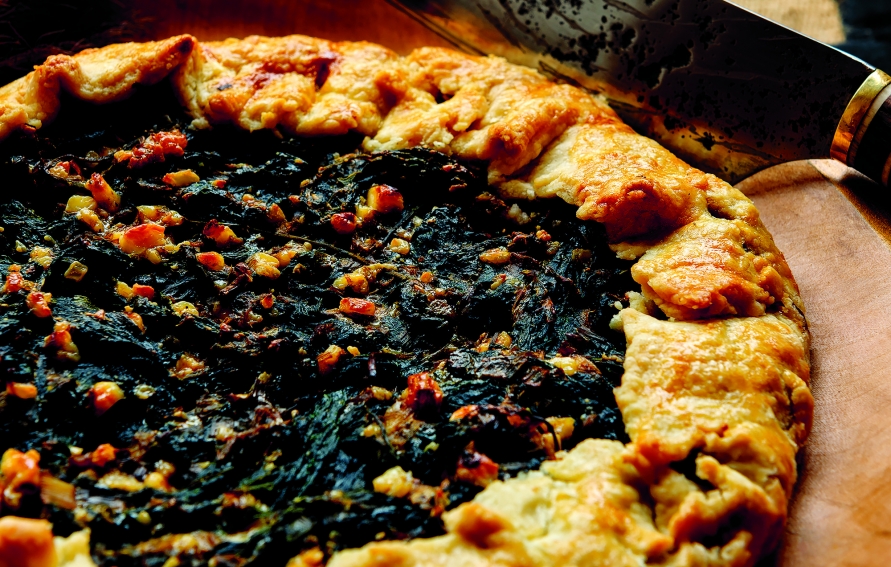About this recipe
This is an earthy dish, with the deep green of the nettles contrasting against the goat cheese to give it rustic eye-appeal. The galette tastes great either hot or cold, making it yet another terrific option for a picnic or potluck.
Instructions
Ingredients
galette pastry dough
8 cups of fresh nettles, packed
1 Tbsp butter, lard, or oil
1 large leek or two smaller ones, diced (use the green stems too)
2 to 3 cloves chopped garlic
1 Tbsp balsamic vinegar or apple cider vinegar
1 cup chèvre (goat cheese)
1 large egg, beaten; plus an egg for a pastry wash
salt and pepper to taste
Method
Make the pastry and refrigerate for 1 hour.
Preheat the oven to 375 ̊ F.
Gently wash nettles in a colander, using tongs to keep from getting stung.
Heat fat in a large pan and sauté leeks and garlic until translucent and lightly browned.
Add nettles and vinegar; and cook until slightly wilted and any liquid has evaporated.
Transfer to a bowl and let cool a bit; then add cheese, egg, and seasonings.
Roll out pastry dough to a 16-inch circle and transfer to baking sheet. Add the filling to the centre of the prepared dough. Fold a 1½-inch border from the outer edge toward the centre, crimping as necessary, and leaving the centre open.
Whisk an egg with a slash of water and brush it on the pastry. Bake for 30 to 35 minutes, or until golden brown. Cool before slicing.
Harvesting Nettles
by Jennifer Banks-Doll
Little whorls of nettle leaves first appear in early March and the harvest continues for up to four weeks, ending when flower fronds appear along their stalks. Nettles are rich in vitamins and minerals. The perfect tonic at the end of winter!
Nettles are often found in disturbed, moist areas. Some foragers prefer to cut just the new buds and first leaves, while others harvest the full top portion. Many pick a basketful of stems with leaves to hang from the ceiling above the woodstove to dry for winter use as a tonic.
Use gloves and scissors to protect your fingers during harvest. Cooking removes the sting. If you do get stung, wash and apply a paste of baking soda mixed with a little water. Ice helps too.




